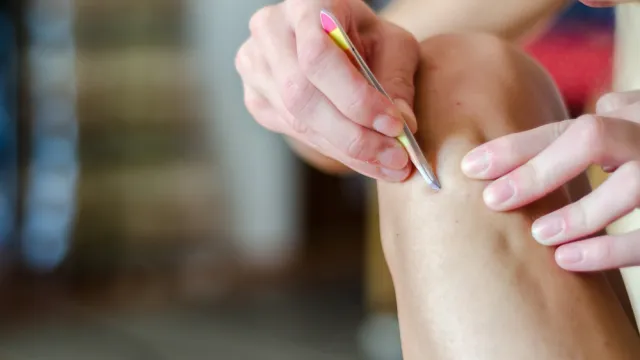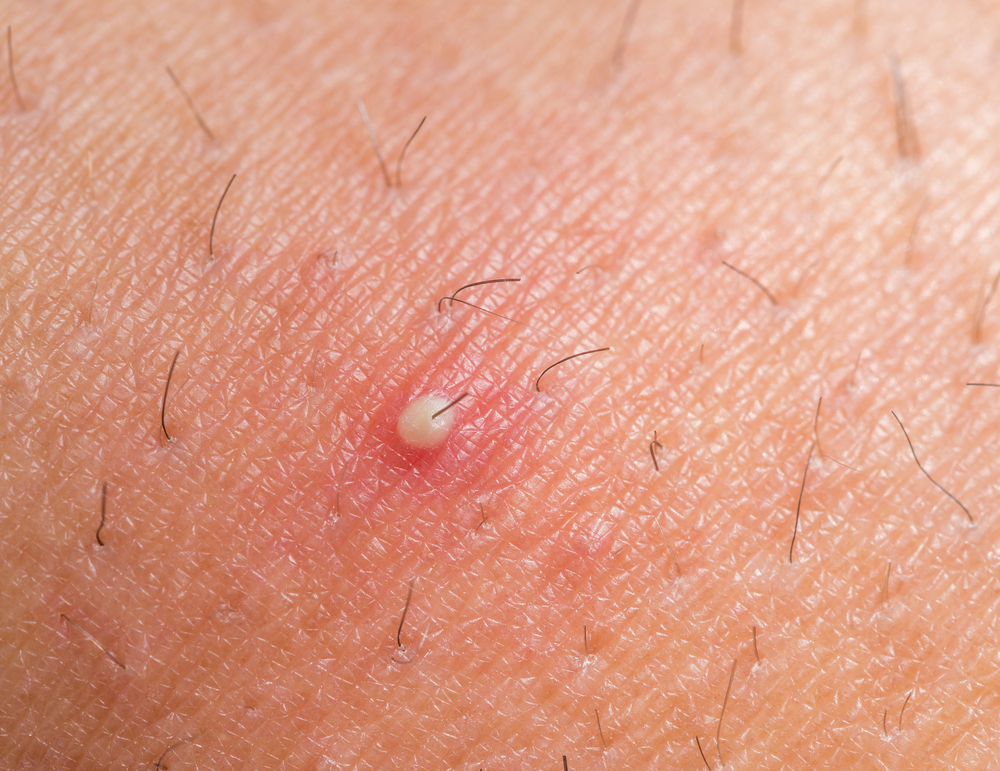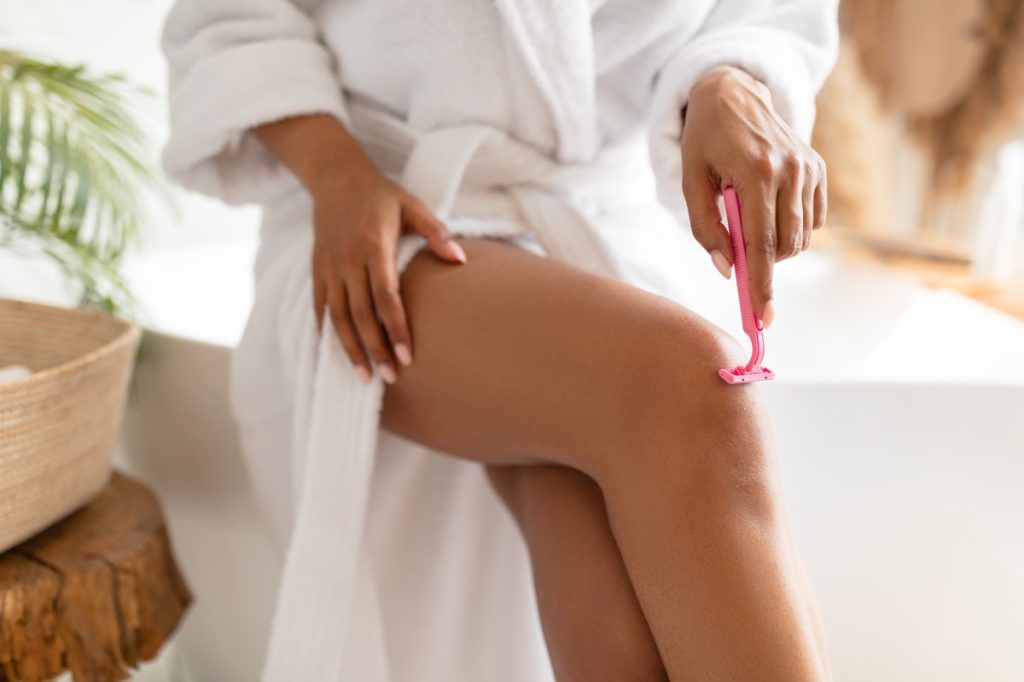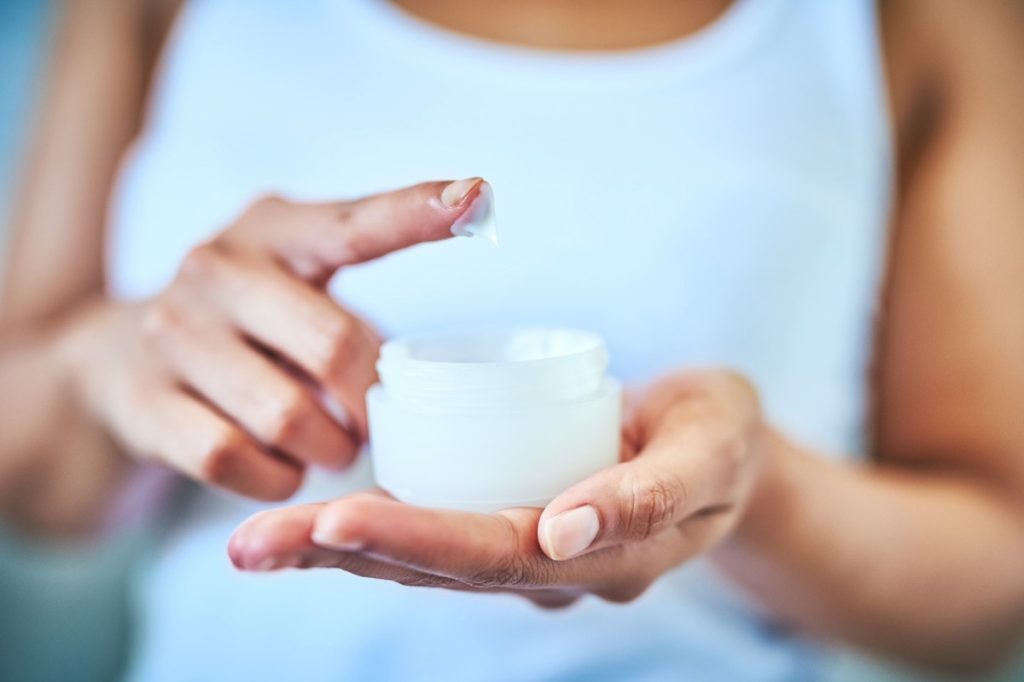I’m a Dermatologist and Here’s How I Never Get Ingrown Hairs

Noticing the development of ingrown hair can be one of the most frustrating parts of any skincare regimen. Unfortunately, ingrown hairs often as inconvenient and painful as pimples—and usually just as hard to prevent. If you’re tired of seeing those red bumps appear, read on from expert pointers on how to keep them at bay. These are the best ways to ensure you never get ingrown hairs, according to a dermatologist.
RELATED: Eating Almonds Can Make You Look Years Younger, Research Shows—Here’s How.
Ingrown hairs result from a strand going the wrong way in the follicle.

Anyone who’s dealt with a pesky ingrown hair knows how frustrating they can be. And as the name suggests, they’re the result of growth gone wrong, board-certified dermatologist Muneeb Shah, MD says in a recent YouTube video posted by Wired.
Using a model to demonstrate, he explains that hair can actually grow out of a follicle and turn back into the skin or get trapped before ever reaching the surface. “While it’s embedded in the skin, that can actually cause quite a bit of inflammation and irritation, so what you’ll actually notice is a red and painful bump,” he says.
Shah says that, at this point, your body can sometimes push out the ingrown hair, but it may require extraction by a dermatologist or esthetician who can find the root and pull it out.
“You could do this at home if you clean the area and use tweezers, but definitely be careful because you can develop a worsening infection,” he cautions.
RELATED: 104-Year-Old Woman Reveals Her Anti-Aging Skincare Routine.
There are a few simple ways to avoid ever getting ingrown hairs in the first place.

Ingrown hairs might seem like the kind of problem you can’t avoid. But according to Shah, there’s one grooming habit that might be bringing them on.
“If you want to prevent these ingrown hairs from happening, avoiding much shorter hair—so if you don’t shave your hair very short—that can prevent [them],” he explains.
While it may not be possible to avoid shaving altogether, making a simple change can still help down on those painful bumps. Shah points out that in his personal experience, electric razors cause far less irritation than traditional razors.
RELATED: 8 Natural Ways to Get Fuller-Looking Lips as You Get Older.
Some skincare products might also help keep them away.

Your shaving style isn’t the only thing that can help. Shah adds that using a “glycolic acid exfoliant” on your skin can go a long way in preventing ingrown hairs.
Other experts have similar thoughts on this assessment, pointing out that caring for your skin can be the ultimate trick.
“Keeping skin moisturized and exfoliated not only makes it easier to shave, but it can help remove dead skin and hairs that may clog the hair follicles, as well as promote hair growth in the right direction,” Nada Elbuluk, MD, a board-certified dermatologist, told NYU Langone Medical Center.
There are a few other shaving don’ts you should be sure to avoid.

In addition to taking care of your skin, you can use some other basic strategies to curb the harsh effects of a razor blade. Mayo Clinic advises washing the area with a soft-bristled toothbrush and then applying a damp cloth before shaving. You should also avoid pulling your skin while passing the razor over it, rinse the blade after each pass, and always go in the direction of hair growth.
Elbuluk warns there’s one essential thing to remember if you do find yourself dealing with post-shave irritation.
“One of the worst things to do when having ingrown hair is to continue to shave and remove hair in the affected region,” she cautions. “It is best to wait until razor bumps have resolved before going back to shaving or engaging in further hair removal at the site.”